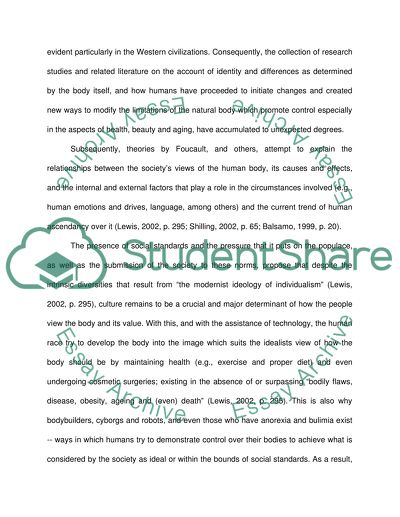Cite this document
(“To what extent are human bodies products of culture Discuss In Essay”, n.d.)
Retrieved from https://studentshare.org/environmental-studies/1405020-to-what-extent-are-human-bodies-products-of
Retrieved from https://studentshare.org/environmental-studies/1405020-to-what-extent-are-human-bodies-products-of
(To What Extent Are Human Bodies Products of Culture Discuss In Essay)
https://studentshare.org/environmental-studies/1405020-to-what-extent-are-human-bodies-products-of.
https://studentshare.org/environmental-studies/1405020-to-what-extent-are-human-bodies-products-of.
“To What Extent Are Human Bodies Products of Culture Discuss In Essay”, n.d. https://studentshare.org/environmental-studies/1405020-to-what-extent-are-human-bodies-products-of.


